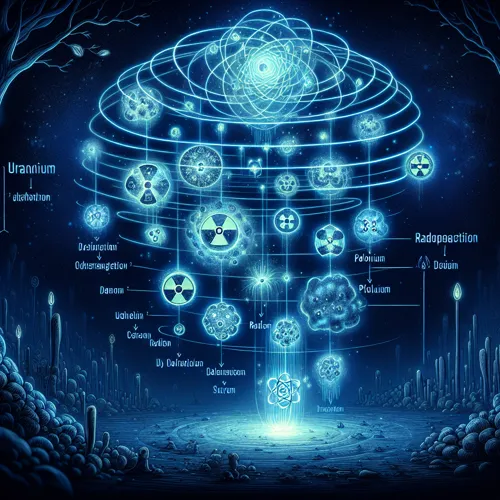Uranium, a peculiar yet fascinating element, has long captured the imagination of scientists and explorers alike. Its unique properties have led to its wide-spread use in various industrial and research applications. But what lies beneath the veil of Uranium’s decay? What are the interesting qualities of its ‘children’?
Nuclear Fission: The Mystery Behind Uranium’s Decay
In 1938, a significant breakthrough in nuclear physics unfolded with the discovery of nuclear fission. This process is initiated by splitting uranium atoms under the influence of a neutron, leading to a series of chain reactions and the release of enormous amounts of energy. In other words, this decay of Uranium paved the way for its extensive usage in nuclear reactors as a vital fuel source.
The Fascinating Family Tree: From Uranium to Thorium
The radioactive decay of Uranium is not an isolated phenomenon; it leads to the production of other fascinating elements known as ‘daughters’ or ‘children’. When U-238 (Uranium-238) undergoes fission, it eventually forms Th-232 (Thorium-232), a radioactive isotope itself. As Thorium decays over time, it leads to the formation of different elements, creating an intriguing family tree in the realm of nuclear physics.
The Role of Radioactivity: Powering Reactor Core and Fuel Rods
In nuclear reactors, Uranium’s decay produces heat due to radioactive emissions and neutron fluxes generated by fission events. This heat energy is harnessed to generate steam which powers turbine generators, ultimately producing electricity. Moreover, the decay process also requires a constant replenishment of fuel rods in the reactor core; this is because U-238 atoms become ‘fertile’ upon capturing a neutron and can potentially form useful fuels like Pu-239 (Plutonium-239).
Applications: From Nuclear Power to Scientific Research
Uranium’s decay has numerous practical applications, some of which include providing energy for electrical grids, serving as fuel for submarines and spacecrafts, and playing a pivotal role in medical research through techniques like PET scans. On top of that, the understanding gained from studying the nuclear reactions taking place within uranium atoms has significantly advanced the fields of atomic and nuclear physics.
Radioactive Decay’s Impact on Our Environment: A Tale of Concern
While Uranium’s decay holds immense potential in powering modern society, it also presents several concerns that warrant further research. For instance, radioactive waste generated by these processes needs careful handling and storage, considering the hazardous impact it could have on human health and our environment if not disposed of correctly. Furthermore, the unregulated mining and use of Uranium fuel may pose environmental challenges, as this process can lead to soil contamination, air pollution, and even waterway poisoning.
As we venture further into our understanding of radioactive materials, we are constantly reminded that both the beauty and danger inherent in Uranium’s decay serve as a powerful reminder of nature’s awe-inspiring force. With each passing day, scientists and researchers are tirelessly working to harness these intriguing qualities responsibly, ensuring that mankind continues its quest for sustainable energy solutions without sacrificing our planet’s health and well-being
